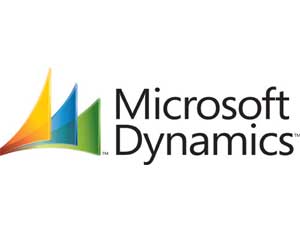

- #Microsoft dynamics nav 2009 how to
- #Microsoft dynamics nav 2009 generator
- #Microsoft dynamics nav 2009 professional
- #Microsoft dynamics nav 2009 download
It has been added on this DVD in version NAV 2009 R2. It is completely un-supported and to be used at your own risk and responsibility.Ī definition of the XML file can be found in an XSD file that you can find on the installation DVD of the Dynamics NAV application.
#Microsoft dynamics nav 2009 generator
The C hart Generator tool is only supplied as an example of how such a tool could be made. The tool contains the following objects:Ĭharts can be generated from form 72004 "Chart Generator Card". This t ool contains objects that can make it easier to generate charts using the Classic Client and not by editing the XML file directly, which is very error sensitive.
#Microsoft dynamics nav 2009 download
On this blog, you can also download a Chart Generator tool. This XML file is an example coming from this website. This is an example of a chart definition: The table, measures, and dimensions on which you base your chart are entered in the XML document. You can export a chart to an XML document, then modify the XML document, and import it back as a new chart. Charts are defined by XML documents that are stored as BLOB fields. You can display multiple measures in the same chart. Then, you select what data from the table to show on the Y-axis (also called a measure). You choose the table to base it on, then a field from that table to show along the X-axis, and, if needed, a filter on this table. You can only apply static filters in charts, that is, you must type in (hardcode) the filter when you generate the chart.Ī chart h as a simple layout.

Green is the only color currently supported. You have two basic chart types: Point or Column. You can't combine data from multiple tables. The unfortunate reality is that many prospects and/or customers look at reporting first when they want to reduce the budget of an ERP implementation project.Ī chart must be based on exactly one table. Doing this correctly from the beginning of a project can and will save a lot of time, money, and frustration. The kind of information you want to be able to retrieve from your ERP system and the way you want to retrieve this information has a deep impact on the implementation of the system. And so, it should be considered from the beginning, in the analysis phase of the project. Personally, I believe reporting is one of the most important aspects of an implementation. The effort that is required for reporting in general is often underestimated and unfortunately assigned to the least experienced consultants, who have to create/adapt the document reports conforming the look and feel of the customer. In most implementations, the focus is set on customizing the Dynamics NAV application to meet the needs of the current processes in the organization and sometimes the future needs are also considered.
#Microsoft dynamics nav 2009 how to
Technology is evolving rapidly and new versions of Dynamics NAV are in the pipeline, so the book will also provide you with a view to the future and how to prepare for it. Knowing other related features is vitally important to obtain a helicopter view of all the reporting possibilities of Dynamics NAV, and the next chapter will introduce Business Intelligence concepts and available technologies that could be used in combination with the Dynamics NAV database. Document reports and other types of specific reports are covered next, and you will get to know all the best workarounds for getting them to work correctly. Moving on we will discuss data visualization, where you will learn how and when to implement all the available Visual Studio controls. The next chapter will introduce the new architecture of Role Tailored Client (RTC) reports and the basics on how to create them or have them generated. The book starts with an overview of what kind of reports you can create without a developer using charts, dimensions, and analysis views.


Reading this book will result in a better understanding and it will help you save time during development.
#Microsoft dynamics nav 2009 professional
Microsoft Dynamics NAV 2009: Professional Reporting is an essential guide to understanding the effort involved in creating reports in Dynamics NAV 2009, and all of the available reporting possibilities. Learn why reports are designed in a specific way and then apply this knowledge to your advantage. This book will show you what’s possible and exactly how to develop reports for Dynamics NAV 2009. Microsoft Dynamics NAV is widely used in enterprises with its enhanced reporting features, but there still isn’t a book that covers reporting in depth, until now.


 0 kommentar(er)
0 kommentar(er)
